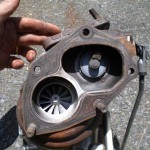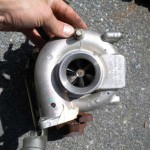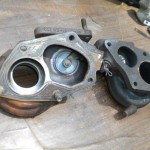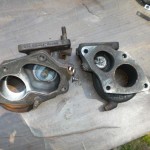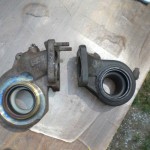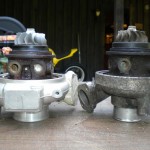
I really do want to like electric and hybrid cars, but they still don’t make any sense to me. Last year, I was discussing with some friends the pros and cons of buying a Toyota Camry Hybrid over a 2.4L gas Camry strictly based on fuel savings. My hypothesis was that if you are buying a hybrid strictly for fuel saving purposes, you are buying it for the wrong reason because the additional $5955 purchase price of the vehicle was never going to be outweighed by the savings in gas. I did some research and crunched some numbers at the time, and this is what I came up with.
Let’s assume you drive 15k miles per year.
Let’s also assume gas is $3.00 a gallon.
Let’s assume you want to buy a new Camry.
Avg = 50/50 mix of city and hwy driving.
2009 Camry 2.4L Automatic
mpg city – 21 (on Toyota website)
mpg hwy – 31 (on Toyota website)
mpg avg – 26 (my math)
price $20,195 (on Toyota website)
city – 714.29 gallons per year = $2142.87 (my math)
hwy – 483.87 gallons per year = $1451.61 (my math)
avg – 576.92 gallons per year = $1730.76 (my math)
2009 Camry 2.4L Hybrid
mpg city – 33 (on Toyota website)
mpg hwy – 34 (on Toyota website)
mpg avg – 33.5 (my math)
price $26,150 (on Toyota website)
city – 454 gallons per year = $1362 (my math)
hwy – 441 gallons per year = $1323 (my math)
avg – 447.76 gallons per year = $1343.28 (my math)
city driving savings = $780.87 per year
hwy driving saving = $128.61 per year
avg driving saving = $387.48 per year
Years of driving to offset gas savings.
city – 7.62 years
hwy – 46.30 years
avg – 15.36 years
In conclusion, for the gas to offset the price of the vehicle, with 50/50 city & hwy driving, you need to own it for 15.36 years to offset the price the savings in gas mileage. Interesting.
So now 2010 is wrapping up, and I find myself wondering what all the hype is over the Chevy Volt. (Full disclosure: I have never seen one in person, let alone driven one because I am not a cool enough blogger yet to be given cars to test drive.) I have been told by friends how great this car is, and how it’s “totally electric”, and “sooooo awesome!” Naturally, I am a skeptical gearhead.
I started with wikipedia (I know. I know.), and learned the basics. The car apparently has two electric motors with a battery pack running down the center of the car that powers them. People on the internet (obviously trustworthy ones) say that close to $10K of the total cost of the vehicle is the battery pack itself, ouch! The Volt has the capability of driving up to 40 miles on that battery pack alone. This would obviously be great for city driving and people with super short commutes. From what I have gathered, charging this battery from your house will be the equivalent of paying $1.60 per gallon of gas, but without emissions. Well…..sorta. Obviously there is emissions at some electrical energy plant offsetting your exhaust pipe, but we won’t get into that. Moving forward……
Let’s say you want to take a nonchalant cruise up to the Kangamangus highway to check out the scenic foliage. Uh oh, it’s more than 40 miles away! What are you going to do!? Don’t sweat it, the Volt will just start up it’s very own 4 cylinder 1.4L gas engine that generates electricity for you when your batteries reach a 30% charge. Ummm, wait a sec. I thought this was an electric car? Well, it is, the wheels are driven by electric motors, thus, it’s electric! (Boogie woogie woogie). It just has a gas engine for when you want to drive more than 40 miles in 1 shot. Oh and that engine only takes high octane fuel, which is right about $3.00 a gallon here in Massachusetts. Now, according to the NY Times article here they got 52 mpg average for their day of test driving and 44.5 mpg in E.V. mode. I’m guessing that “E.V. mode” means that the 4 cylinder generator was running.
Uh oh, the devil’s advocate just entered the party…. If the 2000 Geo Metro (1.0L gas engine) could get between 41 and 47 mpg ten years ago without any electric motors, extra batteries, and without the $20K + more initial cost, is the Volt really doing anything that great? The answer seems to be a complicated one. The Volt obviously has a boat load more technology, comfort, options, and coolness factor than the metro ever did. Unfortunately, it still has a 4 cylinder engine in it that produces emissions and is listed in the same emissions category as the Chevy Malibu, which has a normal gas engine. So emissions wise, the Volt isn’t “officially” better than a normal gas engined car of similar size. Fuel mileage is better than many family sedans out there but is still not cutting edge considering dozens of vehicles 15 years ago could do just as well. The price, well, it is more than most comparable (size, shape) sedans out there. At least you get a rebate to make you feel good? If you are doing mostly city driving within 40 miles of your home, and have a little cash tucked away for a new toy, then this is probably a great car for you. If not, I’d wait a generation or two for them to sort out the whole system and improve upon it a bit further. I appreciate the technology and hard work going into it, but it still doesn’t make much sense to me.












